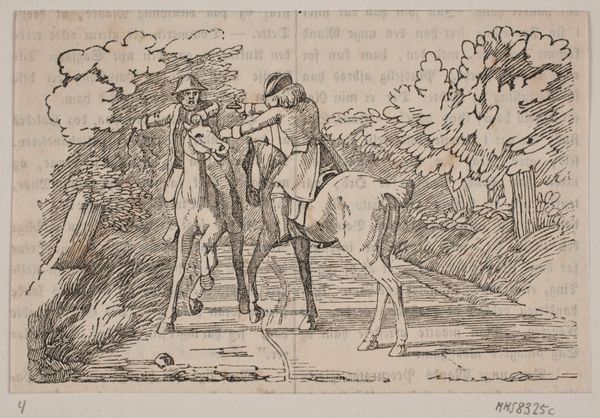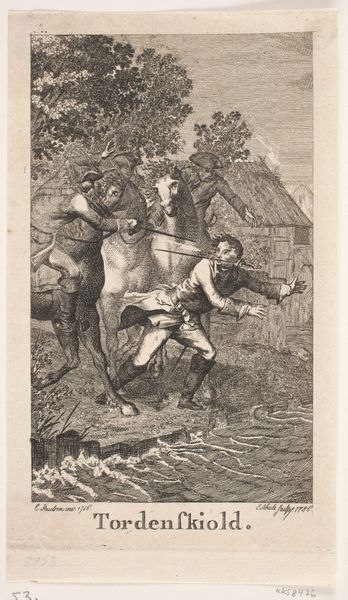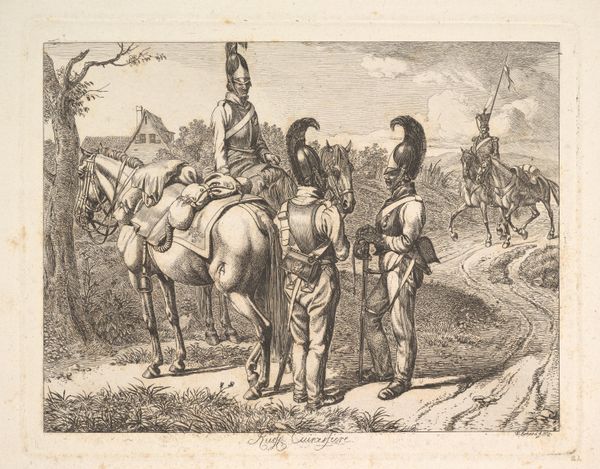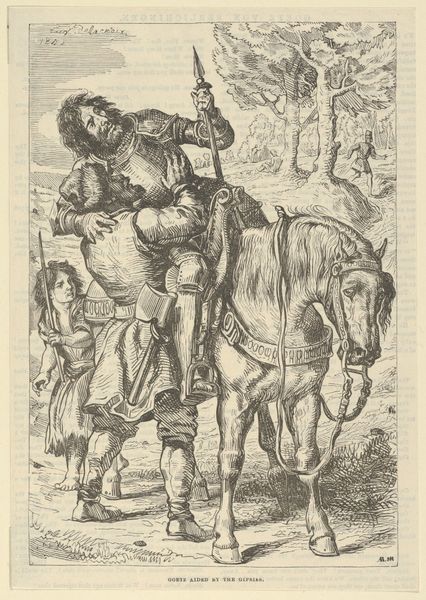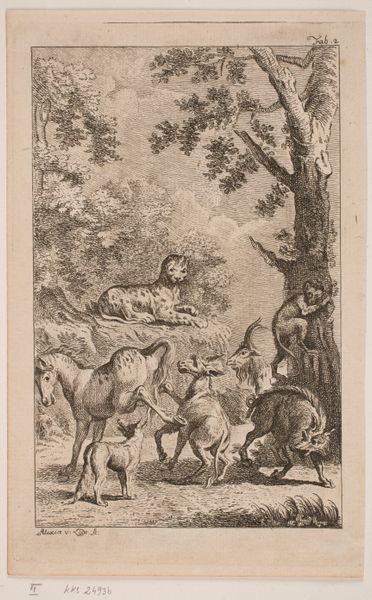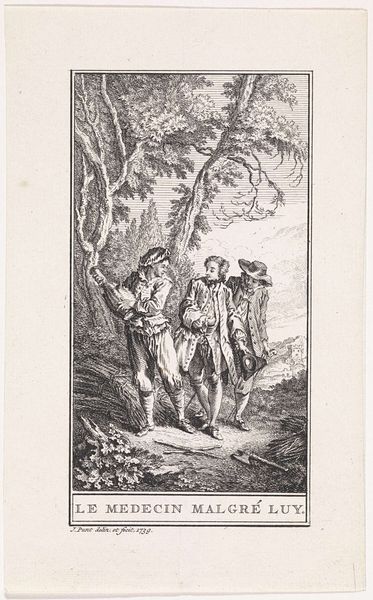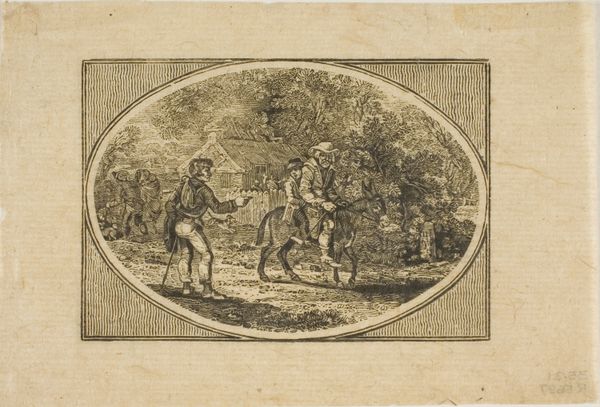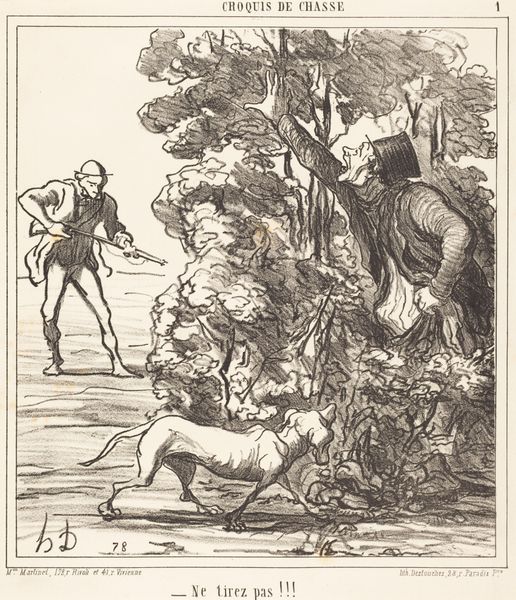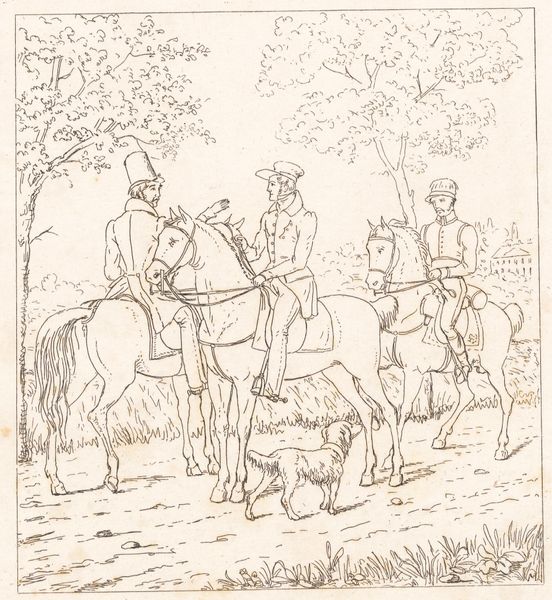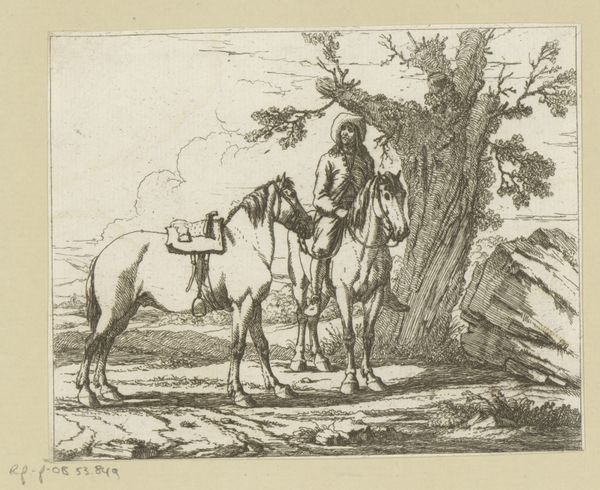
Før kampen med spejlridderen hjælper Don Quixote Sancho Pansa op i et træ 1810 - 1873
0:00
0:00
drawing, ink, pen
#
drawing
#
ink drawing
#
narrative-art
#
ink
#
romanticism
#
pen
Dimensions: 206 mm (height) x 132 mm (width) (bladmaal)
Editor: This ink drawing from sometime between 1810 and 1873 by Wilhelm Marstrand is titled "Før kampen med spejlridderen hjælper Don Quixote Sancho Pansa op i et træ," which translates to "Before the battle with the Mirror Knight, Don Quixote helps Sancho Panza up a tree." I'm immediately struck by how active the scene is despite the limited color palette. How do you interpret the social dynamic being presented here? Curator: This drawing offers us a window into the romanticized depictions of class relations that were popular at the time, while also mirroring contemporary anxieties about social mobility. We see Don Quixote, the "noble" figure, ostensibly helping Sancho Panza, presumably a peasant, up a tree. But is it genuine help, or a performance of benevolence? Consider the power dynamics at play. The knight, elevated on horseback, literally looks down on the commoner. How does this visual hierarchy reflect the socio-political climate of 19th century Europe and its patriarchal roots? Editor: I see your point about the performance of benevolence. It makes me question Don Quixote's motives. Is he actually helping Sancho Panza, or simply using him to fulfill his own heroic fantasy? Curator: Exactly! And how does that resonate with the way societal "helpers" have historically, and still do, position themselves vis-à-vis those they claim to assist? Notice, for example, the rigidity in the line work depicting Quixote, and compare it to the more organic, almost desperate strokes that capture Sancho Panza’s struggle. What statement do you think the artist is trying to make through that visual juxtaposition? Editor: So, it's not just a simple illustration of a scene from Don Quixote, but also a commentary on power, class, and perhaps even the performative nature of charity itself? That really makes me rethink my initial impression. Curator: Precisely. Art like this challenges us to examine the systems of power, historical and ongoing, that shape our perceptions and experiences. What we learn about context illuminates not just history, but our present as well.
Comments
No comments
Be the first to comment and join the conversation on the ultimate creative platform.
